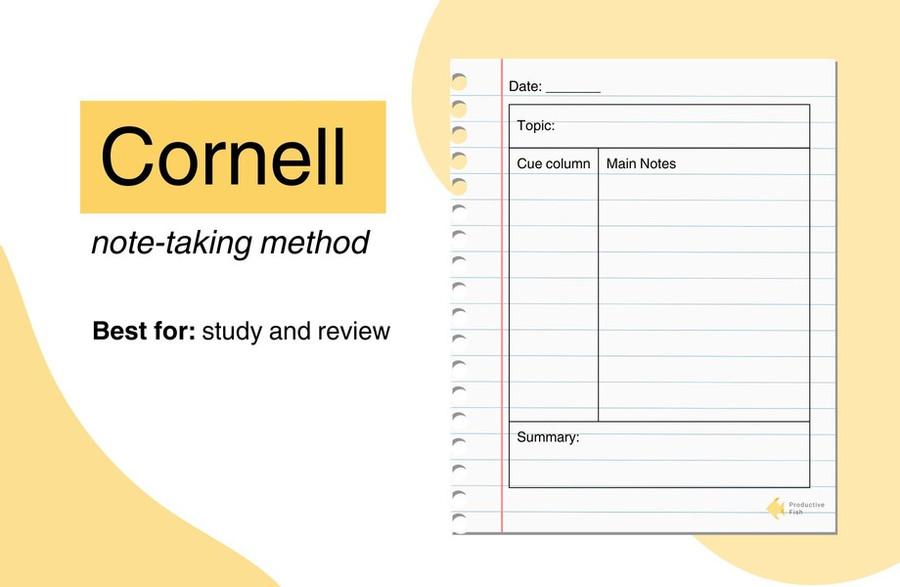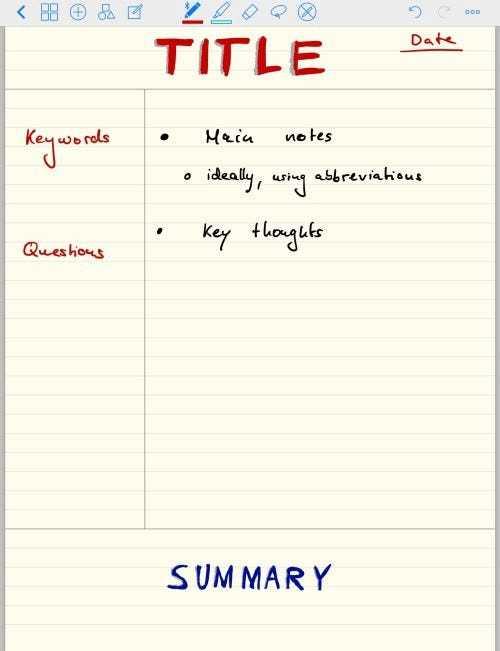Cornell Method
If you're the type who likes to really dig deep into a subject, the Cornell Method is for you.
Imagine your paper is split into three parts: a skinny column on the left for "cues," a bigger area on the right for "notes," and a space at the bottom for a "summary." When you're in a class or meeting, jot down your notes in the "notes" section. It's a great way to help you think more about what you're learning!
58
566 reads
CURATED FROM
IDEAS CURATED BY
Check out the best note-taking methods and tips to improve note-taking skills.
“
Similar ideas to Cornell Method
The Cornell Method
Divide your paper into three sections: a 2.5” margin to the left, a 2” summary section on the bottom, and a main 6” section.
- The main 6" section is used for note-taking during class.
- The 2.5" margin to the left is the cues section. Use this space to write down ideas you'll ...
Cornell Method: How to take notes
- Write down the lecture name/seminar/reading topic at the top of the page.
- Write down notes in the largest section of the page (right-hand column). Transcribe only the facts using bulleted lists and abbreviations. Take notes of questions that arise....
The Cornell Method
- The page is divided into 3 or 4 sections (top for title and, bottom for summary, 2 columns in the center).
- 30% of width should be kept in the left column while the remaining 70% for the right column.
- All notes go into the main note-taking column....
Read & Learn
20x Faster
without
deepstash
with
deepstash
with
deepstash
Personalized microlearning
—
100+ Learning Journeys
—
Access to 200,000+ ideas
—
Access to the mobile app
—
Unlimited idea saving
—
—
Unlimited history
—
—
Unlimited listening to ideas
—
—
Downloading & offline access
—
—
Supercharge your mind with one idea per day
Enter your email and spend 1 minute every day to learn something new.
I agree to receive email updates


